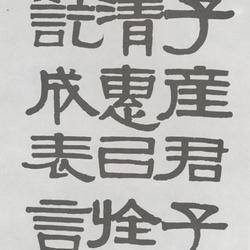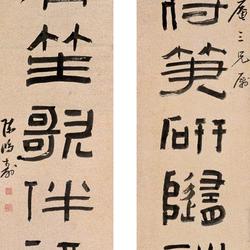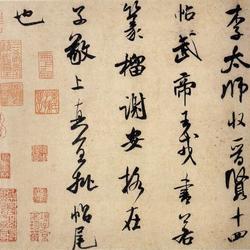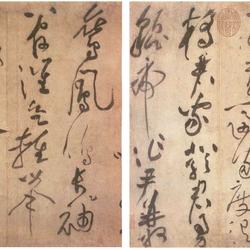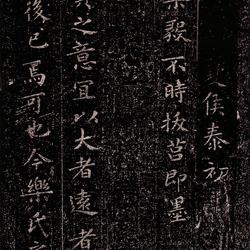







Deng Shiru's "Official Script" Private Collection of Han Tianheng, Shanghai
Appendix: Deng Shiru's novels in Lishu (text/Han Tianheng)
Deng Shiru (1743-1805) was first named Yan, with the courtesy name Shiru, to avoid Emperor Jiaqing's taboo, so he changed his name to Xing, and later changed his courtesy name to Nianbo. Because he lived at the foot of Wangong Mountain, he was also known as Wanbaishanren, Jiyou Taoist, and Fengshui Fisherman. , Longshan Woodcutter. A native of Huaining, Anhui Province, he is smart and good at carving stones. Introduced by Liang Xian, he went to Meiliu's house in Jiangning to view the rare gold and stone books that had been collected since the Qin and Han dynasties. He stayed at Meiliu's house for eight years, devoted himself to copying and copying, and worked day and night to achieve his great achievements in printing and calligraphy arts. In the printing arts, he explored the Qin, Han, Wei and Jin Dynasties, studied Liang Gun and Cheng Sui, and used books to print. He was strong and graceful. He founded the Anhui School in the printing industry and competed with the Zhejiang School. He also exerted a huge influence on later generations. He made a great contribution. The four styles of calligraphy are exquisite, and each has its own unique look. His disciple Bao Shichen said: "Huaining Buyi is a master of seal, Li, Fen, Zhen and Kuangcao. He works in all five aspects, every point and every painting, as hard as a fight. Since the Wu Qing Dynasty, he has been favored by the calligraphy school for hundreds of years. Those who can establish themselves must not be involved, as this is not the result of one state at a time." The proud Zhao Zhiqian also admired Deng very much and said: "In the dynasty, Shanren is the first among the people in the country."
Deng Shiru is worthy of being an outstanding calligrapher in the mid-Qing Dynasty. Qianqiu Tiexue had reached its end by the Qianjia period. It was at a time when Jieren was lamenting the decline of calligraphy that Deng used his unique talent, tenacious exploration and successful breakthroughs to create a new trend in seal and official calligraphy. Introducing and nourishing Baji made epoch-making contributions to the subsequent decline of seal and official calligraphy in the Eight Dynasties and approaching the Qin and Han Dynasties. Therefore, it is one-sided to think that calligraphy has declined from generation to generation since the Jin and Tang dynasties. To be fair and objective, the study of calligraphy has declined since the Tang Dynasty, while the calligraphy and stele study with seal script as its main body has shown a vigorous momentum with the Qianjia period as the turning point, leading this trend and achieving great success. Successful figures such as Deng Shiru, Yi Bingshou, He Zizhen and the previous Jin Dongxin are all responsible for revitalizing the calligraphy world.
It is true that Deng is good at all four styles. After all, there are differences between literary and scholarly and refined and popular. His seal script was developed with the official pen, and he achieved unprecedented ingenuity in vertical and horizontal strokes, eliminating the shortcomings of the previous seal script's delicate descriptions. The official script is sharp and powerful, just like a steel knife carved on stone. It is full of essence and energy, and it washes away the stereotyped and artificial shortcomings of the Ming and Qing Dynasties. Zhuanli, with its strongest point, pioneered the trend and had a huge influence on later generations. Therefore, Zhao Zhiqian has the reputation of "Shan Ren's calligraphy is the first one". It is true that the author thinks that his cursive writing seems to be less pure and crazy, and is slightly involved in slang. This may be due to the talent's versatility, and his energy is insufficient; perhaps it is because he pursues too much power in seal script and official script, and is not good at cursive writing. Derived from a carefree and carefree mentality. This is also undemanding.
This official book was written in the Jiwei year of Jiaqing (1799). The body posture changes from elegant and tame to open, the writing style changes from gentle to vigorous, and the style is grand without any vertical or horizontal tendencies. It is a unique and masterpiece that goes from being accumulated to flourishing. It is worth pondering.

